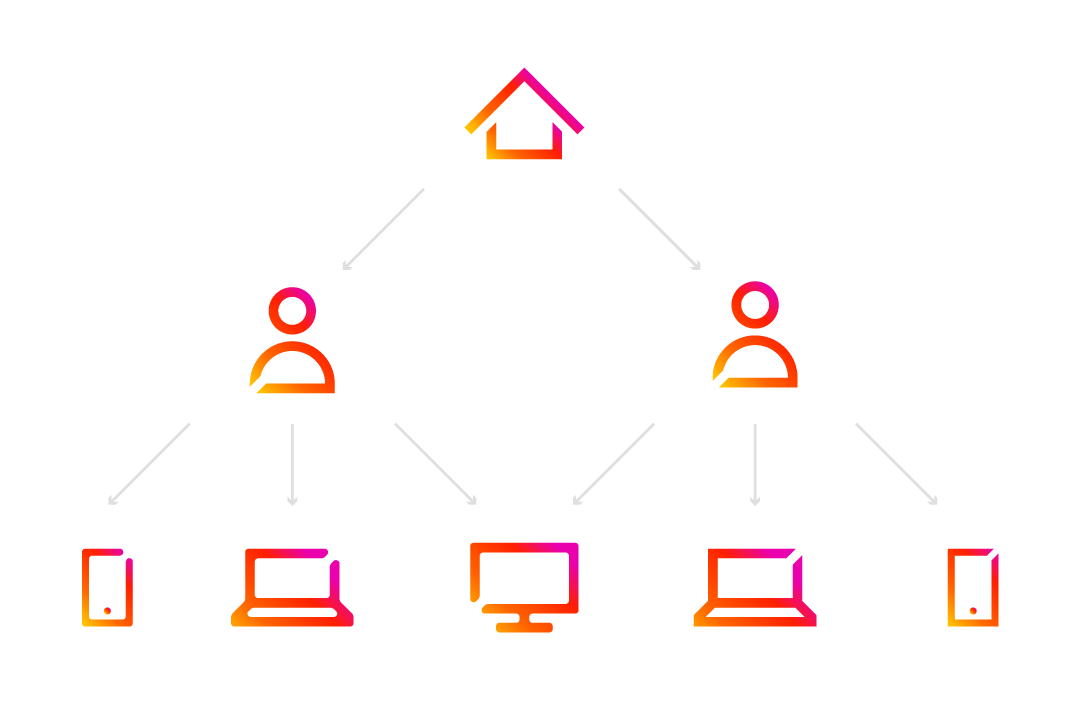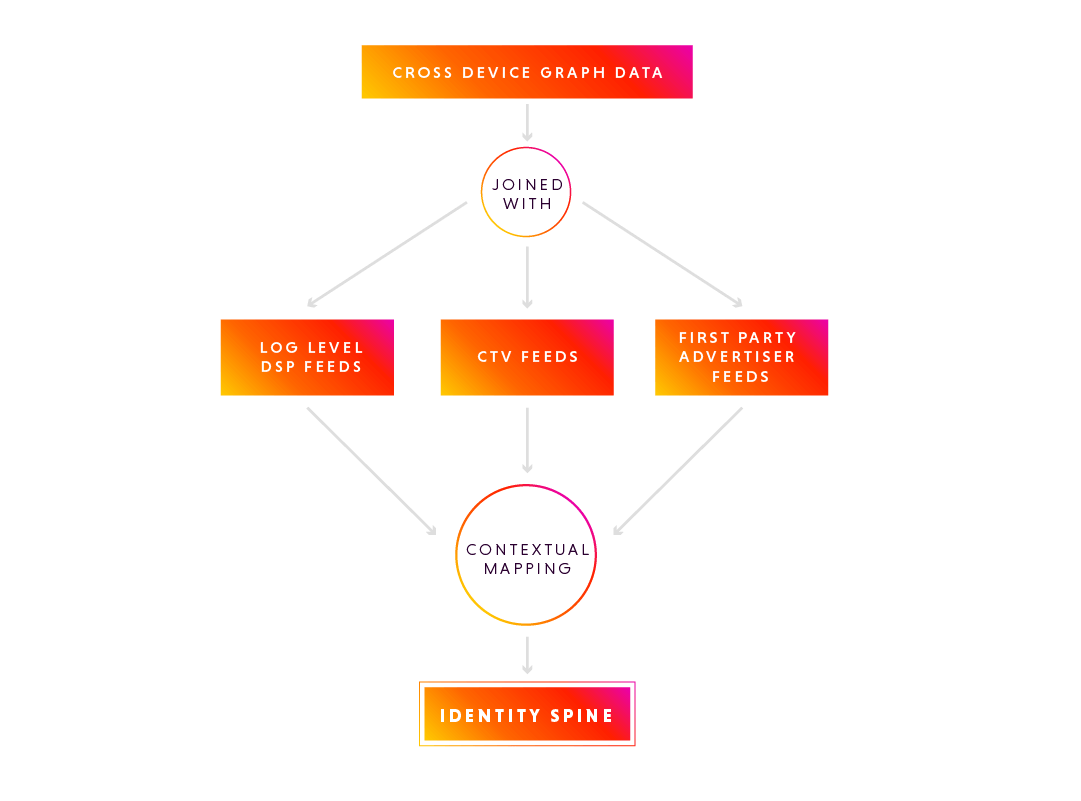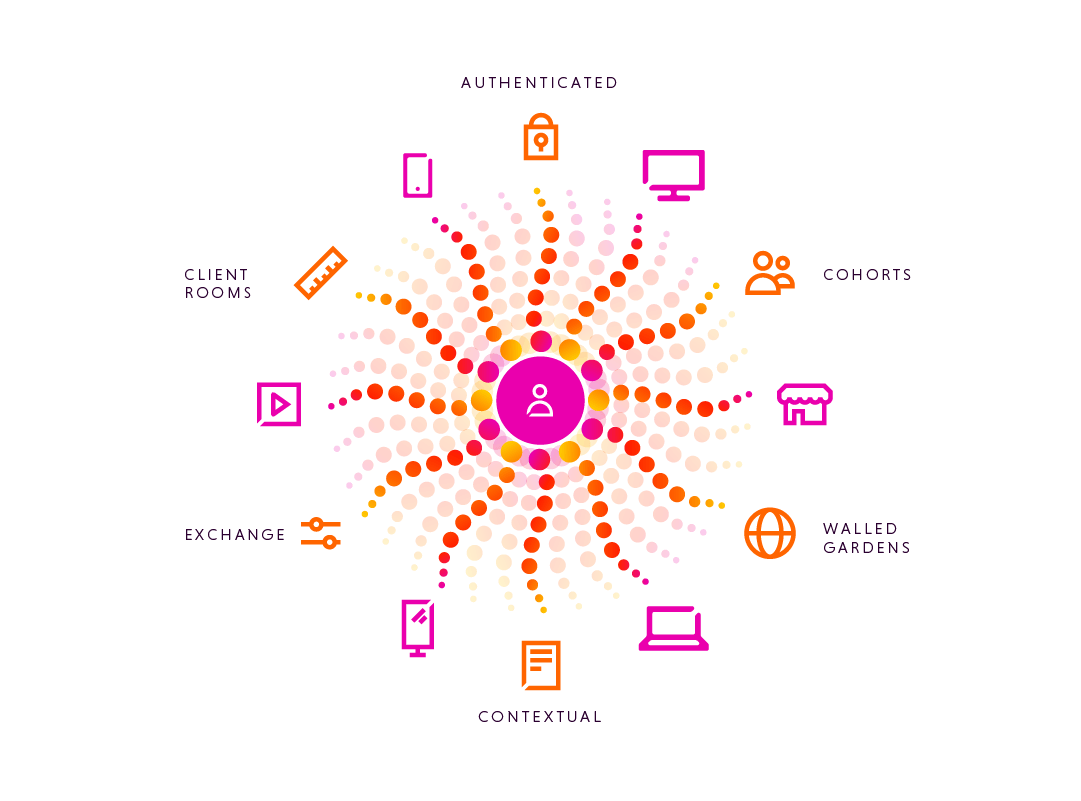
Eroding identifiers have upended advertising
Consumer privacy controls keep changing which forces advertisers to evolve how they target, optimize, and measure advertising. Using third-party cookies as the link to track audiences across marketplaces is becoming less of a solution as consumers opt-out of being tracked. What can be done? Data-savvy tech agencies, such as MiQ, are innovating to build privacy-centric audience graphs that tie together multiple, holistic views of identity, which are not only reliant on cookies which we dive deep into through our Identity e-book series.
The frenzy for cookieless identity graphs

A brand will advertise across a variety of consumers’ multiple devices (laptop, tablet, mobile, connected TV, etc) and each device has its own ID for targeting. When we unify the IDs under one consumer or household into a Universal ID it is called identity resolution. Previously, this could be accomplished by matching third-party cookies passed between the demand and supply-side advertising platforms to each ID. As cookies are scaled back, the industry must innovate towards unifying alternative signals that adhere to privacy concerns. Without privacy-centric IDs, advertisers are unable to manage optimal reach and frequency of messaging, so campaigns end up over-delivering on a small fraction of their audience, and you have to see the same shoe commercial all day, every day.
What is an identity graph? It is a data tool heavily backed by machine learning that uses the concepts of identity resolution to map devices and online activity to a brand’s opted-in first-party CRM data. The graph works by linking together multiple disparate IDs from a variety of marketplaces: It can tie together persistent identity signals such as emails, e-commerce accounts, loyalty memberships, IP addresses to probabilistic signals such as geo-contextual or articles enjoyed online to create a holistic identity. Consumers have consented to sharing their identity with brands, so it is privacy-centric, and consumer PII information is always securely hashed and encrypted to keep it safe. Since cookieless identity graphs are built off consenting audiences they can continue to activate omnichannel targeting, retargeting, ad personalization, and measurement in the future when cookies are turned off.
MiQ’s Identity Spine enables privacy-centric programmatic advertising through the power of data science
MiQ has created the Identity Spine to help marketers realize the value of their first-party data, without depending on cookies. It’s a data-heavy tool that stitches together multiple disparate ID’s from various third-party & first-party data sources into unified user profiles and households to help brands build, scale, and activate first-party data strategies.

Advertisers can use MiQ Identity Spine to solve for cross-device, cross-channel, and cross-DSP activation and measurement. This will help brands to find their existing customers, reach similar customers, and maximize scale and efficiency across the various buying platforms – all on consented data.
It can also be used for more elevated analysis and segmenting to create high-value audiences like interest-based segments, demographic segments, behavioural segments, etc. This can achieve higher conversions for their campaigns based on their custom KPIs.
The future is privacy-centric identity resolution
Programmatic in a privacy-first world must have a sustainable, first party data strategy at its core. Without one, marketers are expected to spend 10-20% more to get the same returns.¹ Cookie-based trackers no longer align with consumer privacy preferences, and unified IDs need to innovate towards alternative identifiers based on opted-in audiences.

Can you see yourself innovating on industry-leading identity solutions? Check out our life at MiQ page.
Want more tech talk? Our Medium blog covers future-shaping data science and analytics innovation from the MiQ team.
¹ Personalizing the Customer Experience Report, McKinsey, 2020.



